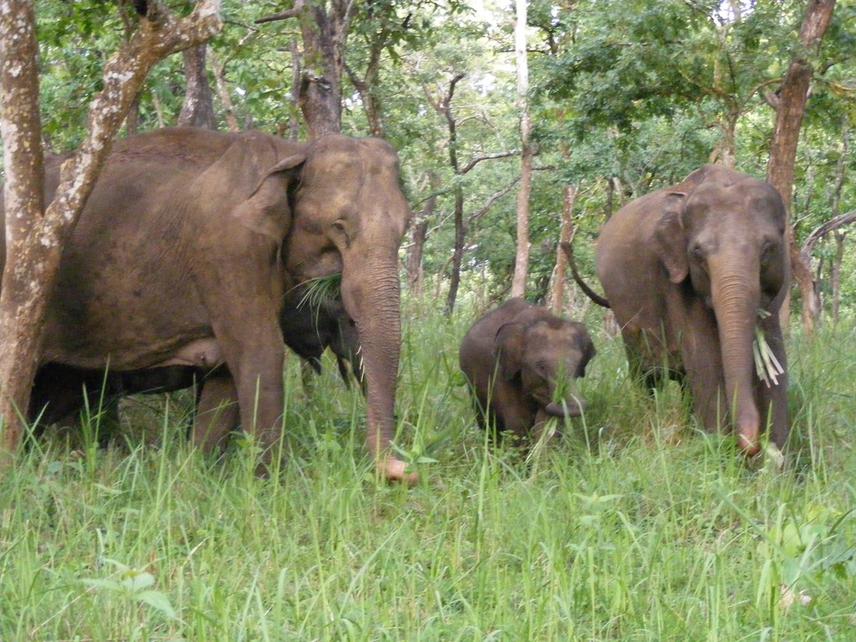Gaius Wilson
Other projects
27 Jun 2016
Estimating a Critically Endangered Sumatran Elephant Population and Developing Human-Elephant Coexistence Strategies in Leuser Ecosystem
This project aims to study the spread and control of lantana and its impact on diet and habitat-use by elephant.

A herd of elephants feeding on grass in the dry deciduous forest of Mudumalai.
The Asian elephant is listed as an endangered species by IUCN and is also listed as a Schedule I species in the Indian Wildlife Act (1972). The Nilgiri Biosphere Reserve (NBR) forms an important part of Asian elephants’ range, with an estimated population of about 9000 elephants and over 10,000 km2 of contiguous habitat it represents the single largest Asian elephant population in the world (Vidya et.al., 2005). This elephant habitat is exposed to severe threats in the form of weed proliferation and biotic pressure from the surrounding human population. Weeds like Lantana spp. and Eupatorium spp. have spread extensively within the NBR visibly reducing grass cover, potentially reducing regeneration and recruitment of tree and shrub species, Habitat deterioration is becoming an all too real a threat to the integrity of the existing habitat. This would reduce the existing large tracts of habitat into smaller fragments, modifying elephant movements and increase the potential of human-elephant conflict (HEC).
Mudumalai lies at the centre of the NBR and is an ideal study site as it plays host to most of the flora and fauna that are representative of the NBR, and the biotic pressures are also representative of the different regions of the NBR. Lantana will be experimentally removed using four different methods namely removal using an excavator (mechanical removal), cutting and removing, using elephants to uproot and remove lantana and with the use of salt water sprays to kill the plant. The impact of such removal methods on existing native plants (grasses, woody shrubs and seedlings of tree species) will be assessed by enumerating the densities of these plants before and after the removal of lantana within study plots. It would be important to understand the implications of removal by different methods and also the relative efficiency of the different methods and their costs.